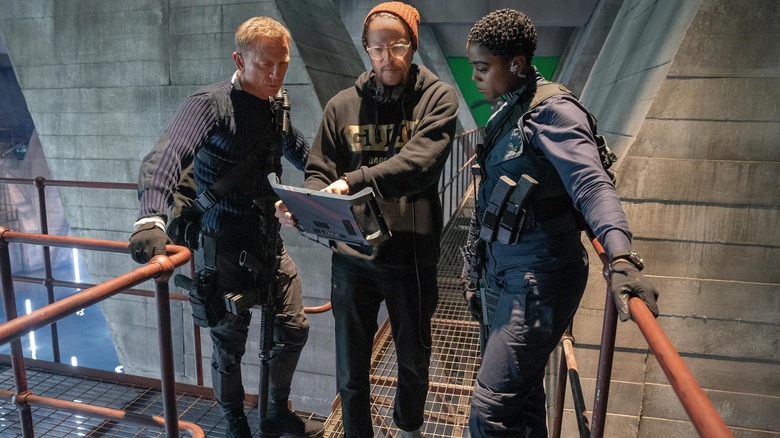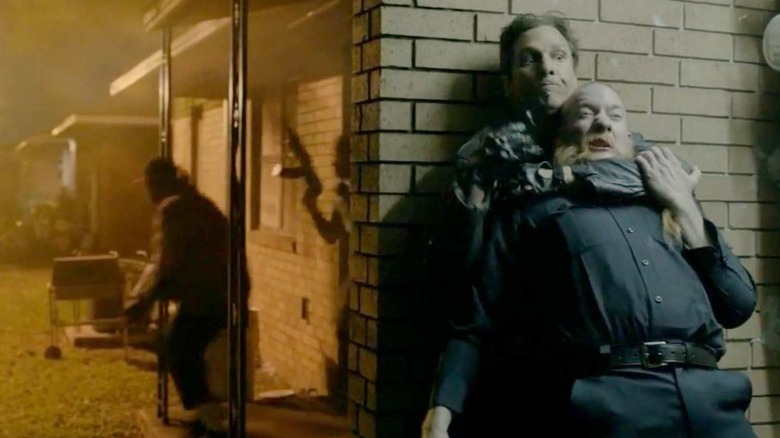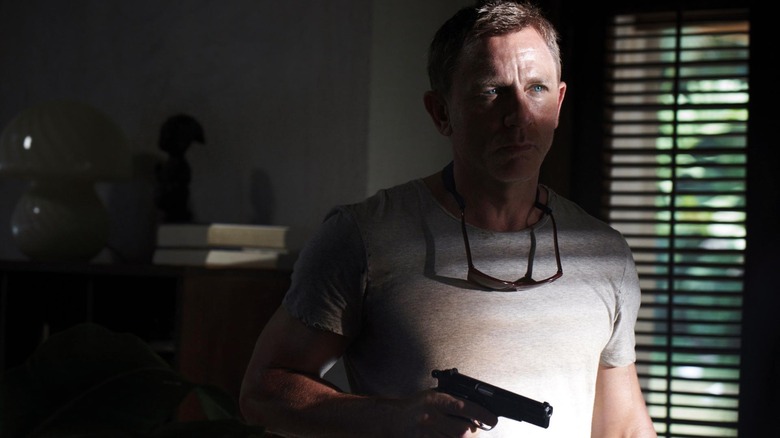How No Time To Die Director Cary Fukunaga Worked His Signature Long Takes Into The Film [Exclusive]
An action franchise that revolves around the flashiest superspy ever to arrive in fiction would seem to be the natural place for visionary filmmakers to add their own unique flourishes. Though Cary Joji Fukunaga wasn't the first choice to helm "No Time to Die," the first American to ever direct a "Bond" movie has an established history of putting his distinctive mark on his projects — namely, his signature single-take action sequences. Upon hearing that Fukunaga would be stepping in to direct, many fans immediately began to wonder whether he would manage to work in his usual flair into the typically micromanaged Bond franchise. Thankfully, it appears that Fukunaga found a perfectly natural and story-specific fit to show off a little flair. A vintage James Bond attitude if there ever was one!
Cary Fukunaga and the Long Take
Though many first were introduced to him through his work on "Jane Eyre," Cary Fukunaga made an immediate name for himself through his directing prowess on the first season of the hit HBO series, "True Detective." In the fourth episode, viewers were treated to a show-stopping action sequence filmed with the appearance of one single take, tracking Matthew McConaughey's increasingly frantic Detective Rust Cohle through a heart-pounding shootout. Fukunaga uses a similar technique in the Netflix series "Maniac" and he also brought it to the world of James Bond.
In a wide-ranging interview with /Film contributor Phil Nobile Jr., Fukunaga touched on what went into adding a complicated long take sequence in "No Time to Die."
"It was something I wanted to do at some point, if it fit. But I wasn't going to do it just to do it. And as we were moving forward with the story, there didn't seem like any obvious places for a longer take. So when an opportunity came to do something that felt in the moment and felt like a gauntlet, it was something I definitely pushed for."
The subject of long takes (or "oners," as they're commonly referred to) can be fodder for intense debate, as some will argue that the only purpose they serve is to call attention to the technique for no reason besides flashiness. Many others point to incredibly effective instances — such as in many a Steven Spielberg movie (as this "Every Frame a Painting" video goes into) — that go entirely unnoticed because of how well they serve the storytelling needs of a given scene. And then there are extreme examples like Sam Mendes' "1917," which is entirely comprised of the illusion that the whole sequence of events take place within a single unbroken shot (or more like two, given the fade to black roughly halfway through the film). I've written previously about how well Mendes' use of the camera in "1917" complements the storytelling ambitions at hand, so you can count me among the ranks of #TeamOner.
Star Power
These sorts of long take sequences can be immensely challenging, taking up an entire day's shooting schedule (or more!) just to go through the basics of rehearsing; walking each actor, crew member, and extra through the intended goal; and finally getting the timing down just right for the actual take itself. According to Fukunaga, star Daniel Craig was more than willing to go the extra mile and deliver the best possible take:
"Daniel's a perfectionist, so he wants every punch, every shot, everything just to be, on a physical level, flawless. And even just that early fight in Matera, where he does three or four combos with Primo (Dali Benssalah) before he wraps the laundry line around his neck, Daniel would have preferred to do that in cuts, just so he can make sure every punch looked good.
And I was like, 'Daniel, these look perfect. There's nothing to worry about here. These are pretty pitch-perfect hits. We don't need to get coverage here.' But it comes from his desire, which I share, to make sure that when people watch, there's no suspension of disbelief issues, no doubts that those aren't real hits landing, or himself taking hits.
"So to then pitch another single-take shot (that lasts even longer) later in the film, that was something that we talked about at length with the producers and the stunt coordinators, and discussed, 'Well, what could we do that no one feels like the performance is being sacrificed?'"
There are many reasons to check out "No Time to Die" as soon as its available to wider audiences in the States, but Craig's intense commitment to the role and Fukunaga leaving his own distinctive mark on the franchise are two very compelling examples to do so. The last "Bond" film in the Daniel Craig era comes to a bittersweet end on October 8, 2021.


